Focaccia is a delicious canvas for creativity. Whether you’re aiming for classic rosemary and sea salt or experimenting with seasonal veggies, focaccia is all about embracing simple ingredients and time-tested techniques.
While the recipe for focaccia has existed since Roman times, perfecting this ancient Italian flatbread takes a little practice. We turned to three chefs for insights about how to make the perfect focaccia every time.
What is focaccia?
Focaccia is a traditional Italian flatbread that people have been perfecting for 10,000 years. The name focaccia is derived from the Latin word “focus”, which means “hearth” or “fireplace,” reflecting its origins as a flatbread baked over an open flame. It is one of Italy’s oldest forms of bread, believed to have originated in the Liguria region along the northwest coast, where it became a staple food.
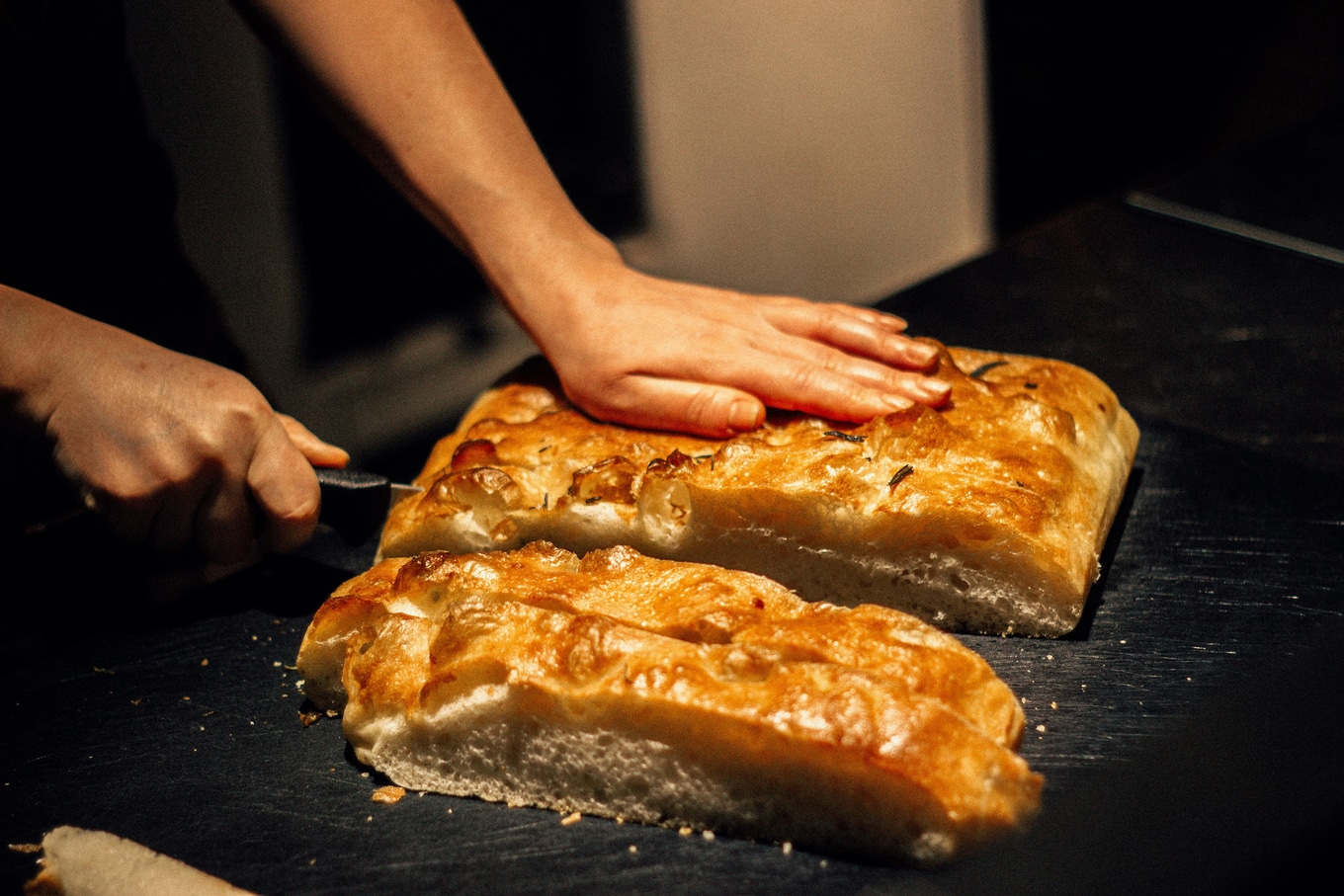 Ruslan Rozanov/Pexels
Ruslan Rozanov/Pexels
This flatbread is characterized by its golden, crispy crust and soft, airy crumb, and is often seasoned with olive oil, herbs, and sea salt. These ingredients give focaccia its rich, savory flavor that pairs well with countless toppings.
Traditionally, focaccia was baked in communal wood-fired ovens, and it has evolved over centuries, becoming popular in various regions of Italy, each with its own twist on the recipe. The generous use of olive oil, both in the dough and on top before baking, is what makes focaccia unique, contributing to its distinctive flavor and texture.
Today, focaccia is enjoyed in a variety of ways—it can be served as a side dish, used in sandwiches, or eaten on its own. This classic bread has a straightforward ingredient list but requires careful attention to detail to achieve that signature combination of crispiness and fluffiness.
The perfect focaccia: 5 expert tips
We turned to culinary experts Nic Vanderbeeken (Executive Chef at Apéritif in Bali), Rena Awada (Head Chef at Healthy Fitness Meals LLC), and Robert Smith (Chef at the Culinary Arts Collective ATL) for their tips on perfecting focaccia.
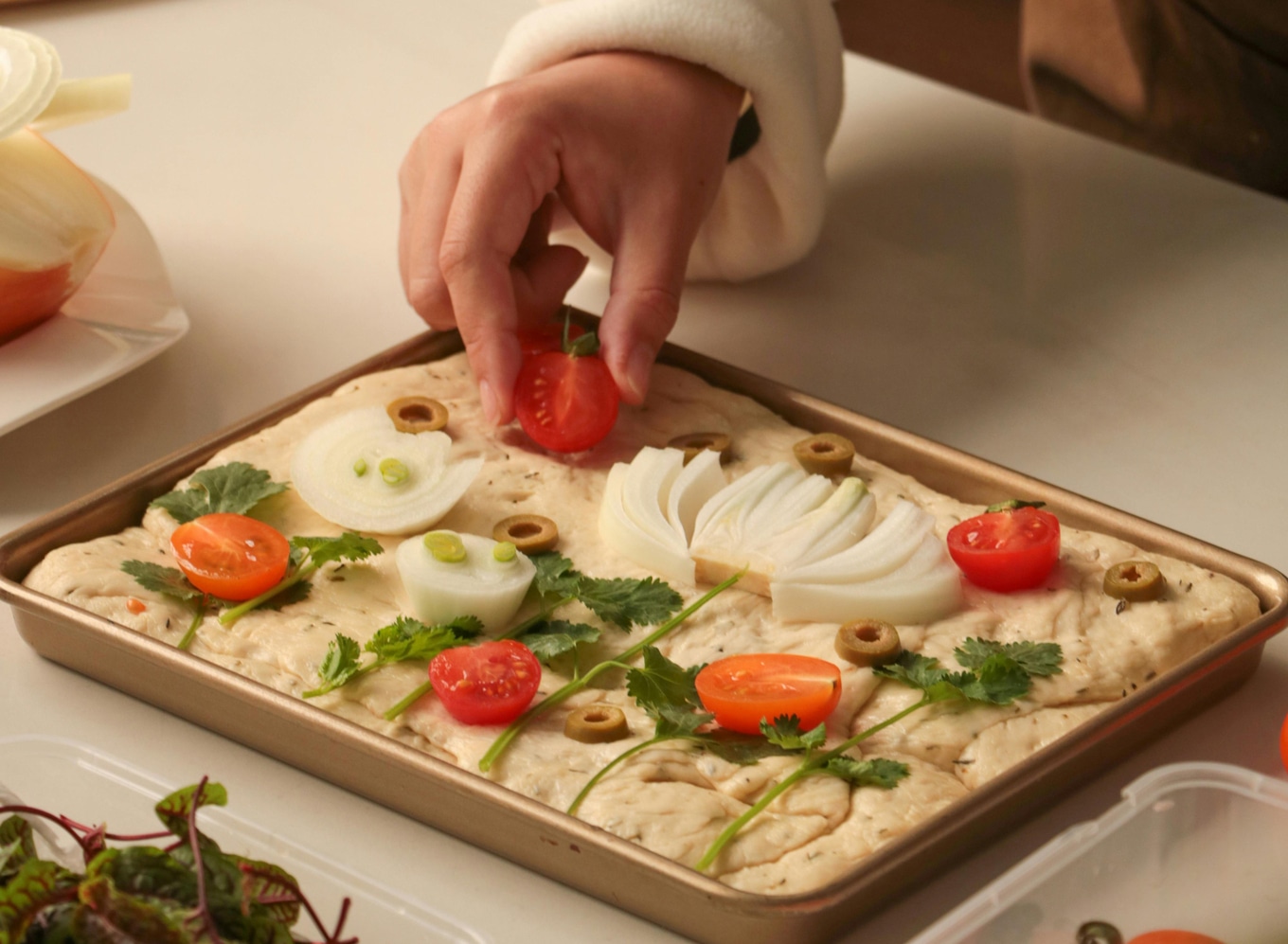 Pexels
Pexels
1The perfect focaccia foundation
The foundation of great focaccia starts with the right ingredients: flour, water, yeast, olive oil, and salt.
Using high-quality bread flour is crucial for achieving the ideal texture. Bread flour has a high protein content, which helps develop a strong gluten network and results in a chewier focaccia.
“Use high-quality bread flour for a chewier texture, or a mix of all-purpose flour and whole wheat flour for added flavor and nutrition,” Smith tells VegNews.
If you’re catering to different dietary needs, gluten-free flour blends are also an option.
Proper dough hydration is crucial for achieving the right texture. Use warm water to effectively activate the yeast, and aim for a higher hydration dough, which will help create a lighter, airier focaccia.
Focaccia dough should feel fairly wet with around 70 to 80 percent hydration. “Don’t be afraid if it feels sticky—this means you’re on the right track when striving for an airy crumb with large holes,” Vanderbeeken tells VegNews.
Active dry yeast or instant yeast both work well, but make sure it’s fresh. You can also use a sourdough starter for a unique tangy flavor.
Lastly, salt enhances flavor and helps control yeast activity, with sea salt or kosher salt working best.
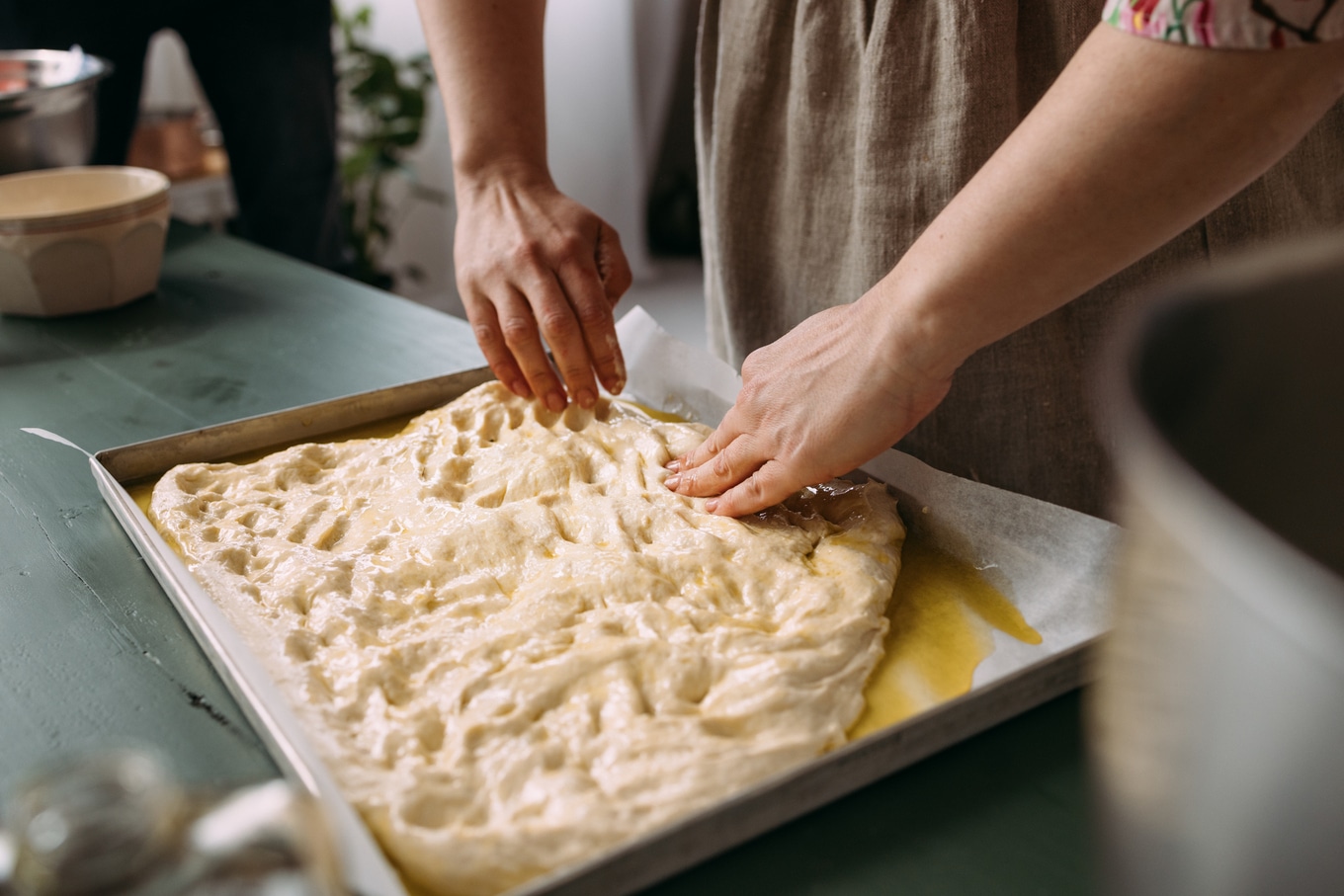 Getty
Getty
2Kneading, resting, and rising
Kneading and rising are crucial steps in creating focaccia’s signature texture. Start by kneading the dough until it is smooth and elastic—about 8 to 10 minutes by hand. This step helps develop the gluten needed for structure.
After kneading, let the dough rest for at least 10 minutes. This initial rest relaxes the gluten, making the dough easier to work with and contributing to a soft, pillowy texture.
Next, allow the dough to rise. “The most important step that home cooks often overlook is the kneading and resting,” Smith says.
For the best results, Smith says, let the focaccia dough rest twice. The first rise should be around two to three hours at room temperature or until it doubles in size.
“By being patient and giving the dough a nice, long rise, you’ll end up with focaccia that’s both delicious and satisfying to eat,” Awada says.
Vanderbeeken recommends following the first rise with a cold ferment in the fridge overnight to develop more flavor and texture.
If opting for a cold rise, allow the dough to come to room temperature for about 30 minutes before shaping. “The second rise, after shaping, should last another hour,” Vanderbeeken says.
Awada also suggests extending the rise time up to four hours if you have time to spare. “During this time, the dough becomes beautifully airy and develops a deeper taste,” she says. Cover the bowl with a damp towel or plastic wrap to keep the dough from drying out.
When it’s time to transfer to the baking dish, dandle the dough gently to maintain its airy texture. “Use a light touch when stretching the dough into the pan,” Smith says. “Be gentle to retain the air bubbles.”
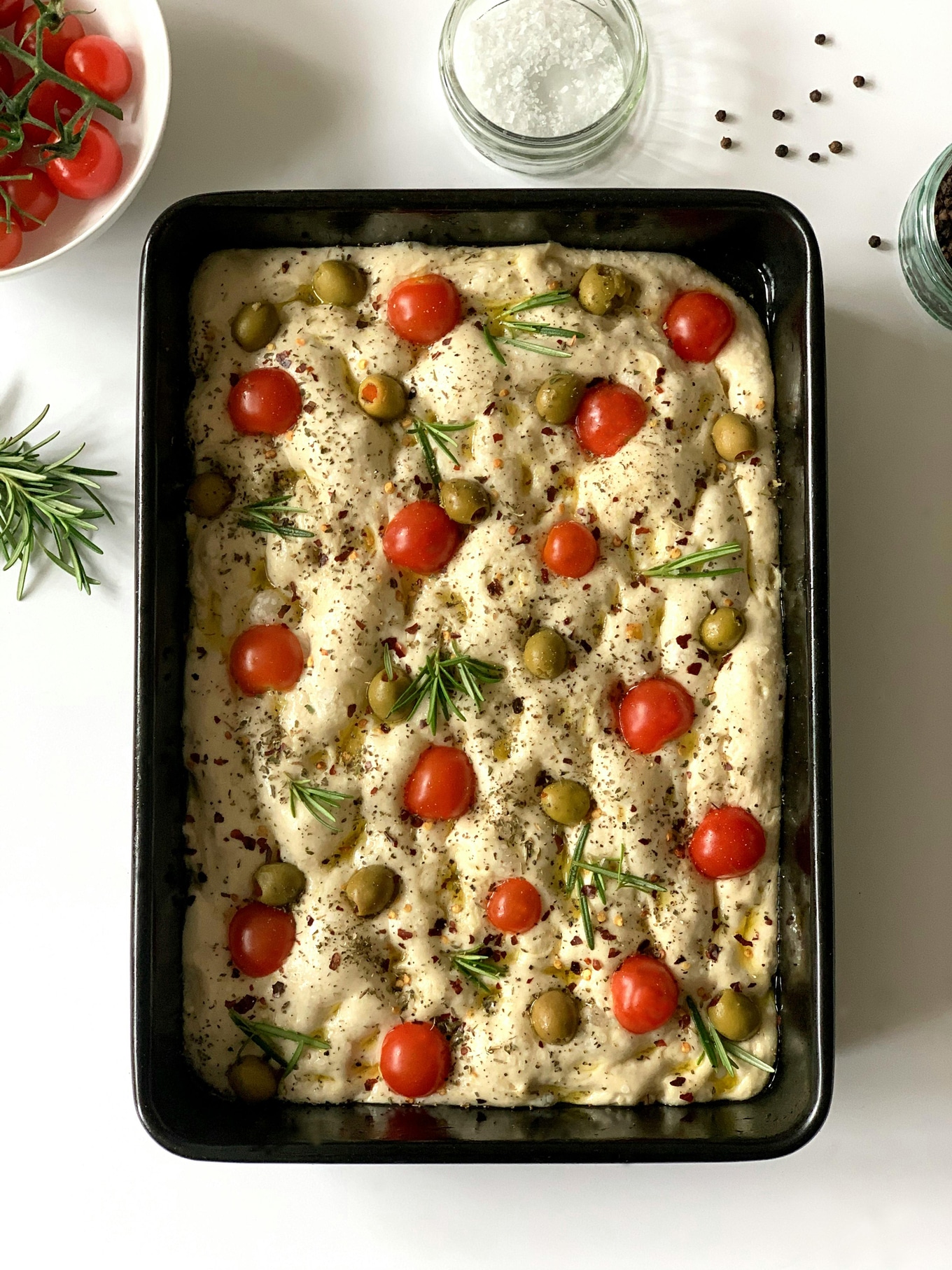 Plants and Graphics/Pexels
Plants and Graphics/Pexels
3Experiment with toppings
Flavorful toppings are what take focaccia to the next level. Vanderbeeken recommends keeping it simple but impactful.
“Caramelized onions with sundried tomatoes and sea salt is my go-to,” he says. “The onions’ sweetness paired with the tomatoes’ umami creates a perfect balance. Adding some crunchy Maldon sea salt on top before baking gives a pleasant bite and texture contrast.”
Fresh herbs can be mixed directly into the dough, or sprinkled on top before baking to release their natural oils.
“Incorporating herbs like rosemary, thyme, or oregano into the dough can elevate your focaccia with a burst of flavor and aromatic essence,” Awada says.
Awada’s favorite topping is a vibrant combination of cherry tomatoes, olives, and fresh basil. “It’s such a vibrant mix of colors and flavors; the sweetness of the tomatoes balances nicely with the briny olives and the aromatic basil,” she says. “For a little extra kick, I sprinkle some flaky sea salt and cracked black pepper on top.”
Seasonal vegetables such as thinly sliced zucchini, bell peppers, or cherry tomatoes also make fantastic additions, providing freshness and added color.
When crafting your own combinations, aim for a mix of sweet, salty, and herbal flavors, while incorporating contrasting textures. Pair crunchy toppings like seeds or nuts with softer elements such as roasted garlic for an elevated sensory experience.
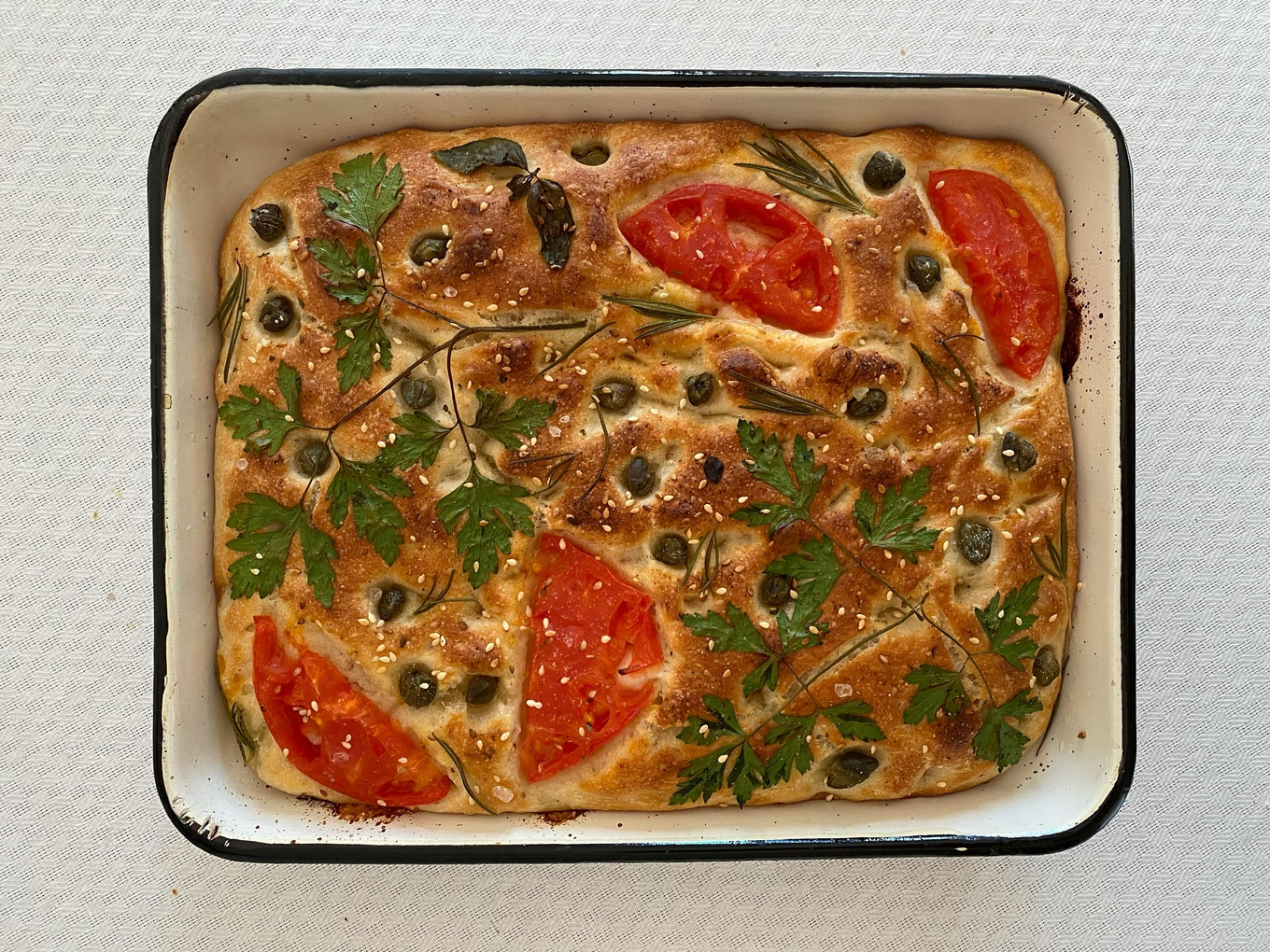 Marina Zasorina/Pexels
Marina Zasorina/Pexels
4Perfect the bake
Getting the bake right is key to a great focaccia. Using high-quality olive oil is essential for flavor and a golden, crispy crust. “I always suggest using a generous amount of olive oil on the bottom of the baking pan, which creates that golden, crispy crust without overcooking the inside,” Vanderbeeken says.
Creating dimples on the dough is an important step before baking.
“Press your fingertips into the dough to create dimples, letting the oil seep in and do its magic during baking,” she advises.
The experts recommend baking at a high heat to ensure a golden crust. “Bake at a high temperature (about 425 degrees Fahrenheit) to ensure a quick rise and golden crust,” Smith says. “If you want extra crunch, place a baking stone in the oven to preheat.”
Another tip for an ideal crust? Smith suggests creating steam by placing a shallow pan of water at the bottom of the oven during the first 10 to 15 minutes of baking, which helps keep the interior moist while forming a crisp crust.
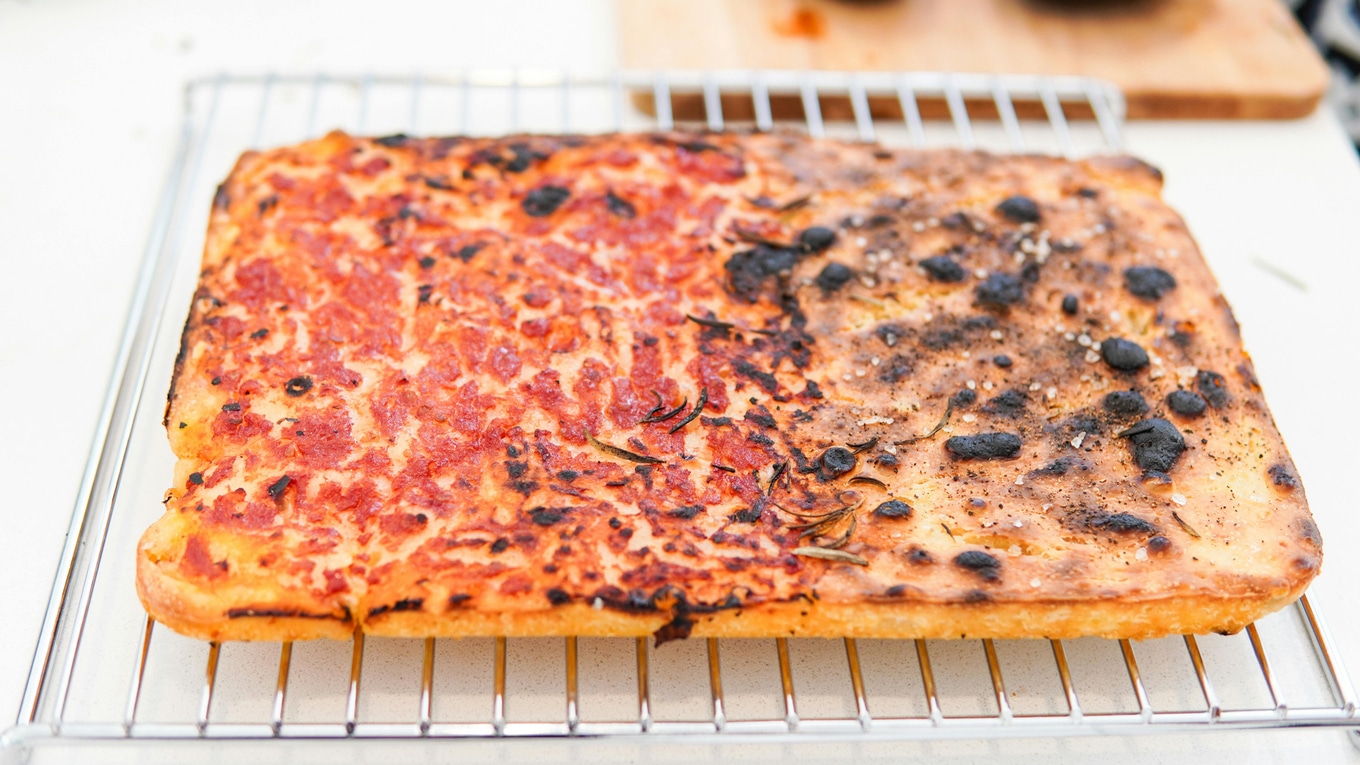 Anna Guerrero/Pexels
Anna Guerrero/Pexels
5Finish with a broil
To achieve an extra crispy finish, broil the focaccia for the last minute or two. “I like to finish it off under the broiler for the last couple of minutes to give it that extra crispy top,” Vanderbeeken says.
But make sure to stay close to the oven so that your perfect focaccia does not get burnt. “Just keep an eye on it, and don’t be afraid to check by tapping the crust to see if it’s reached your desired level of crisp,” Awada says.
For more plant-based stories like this, read:
JUMP TO ... Latest News | Recipes | Guides | Health | Subscribe









